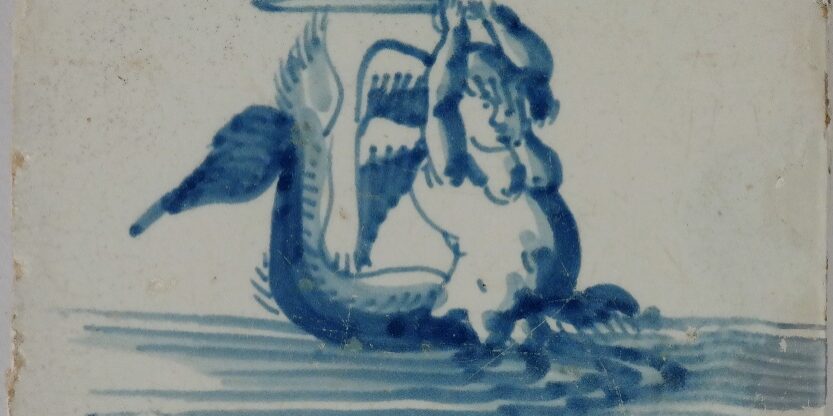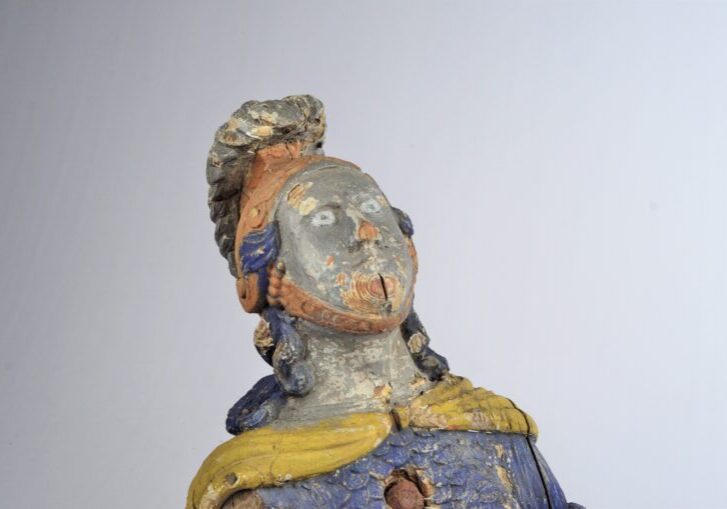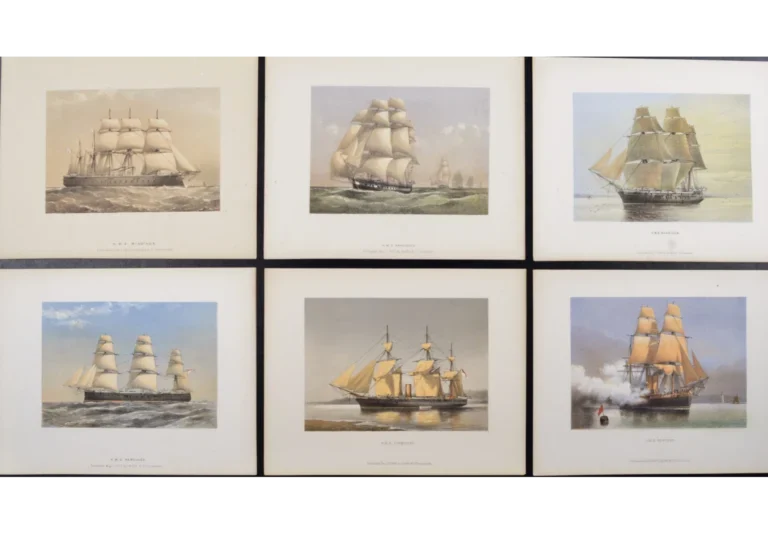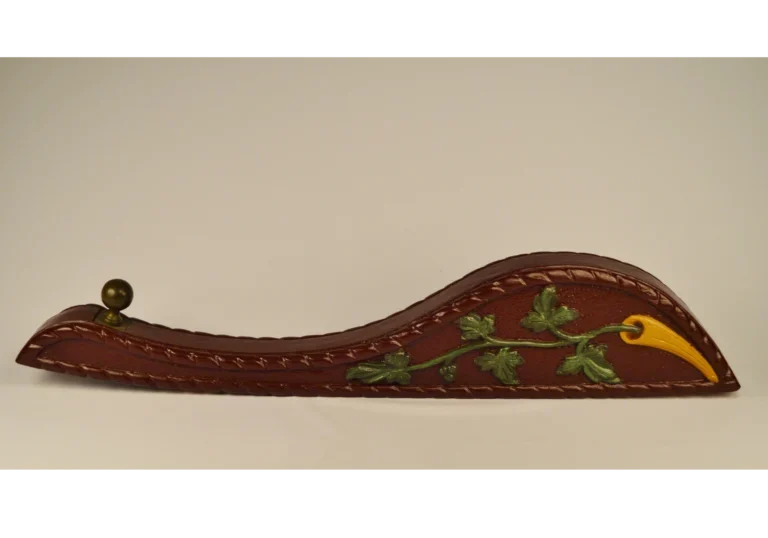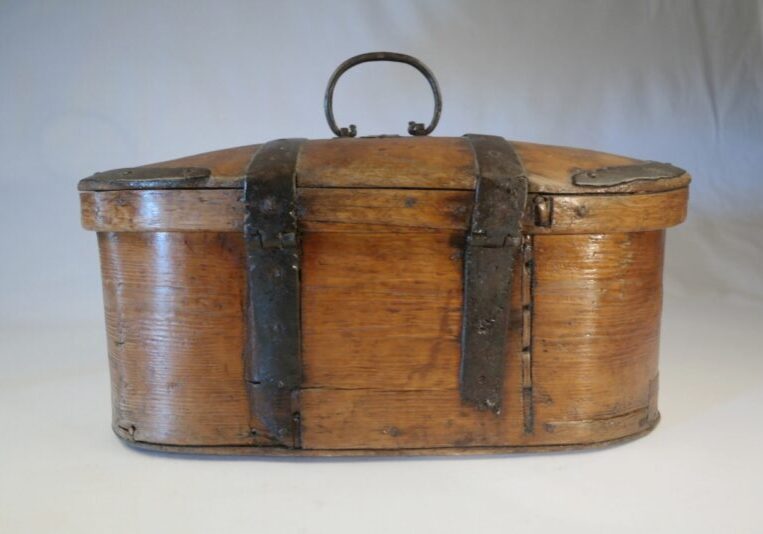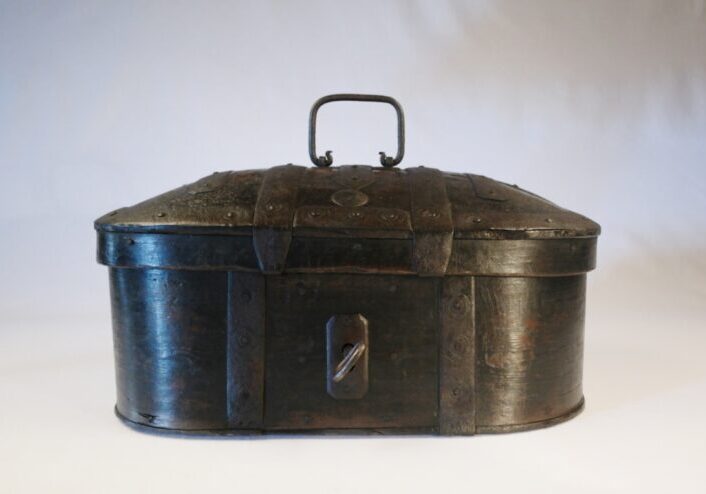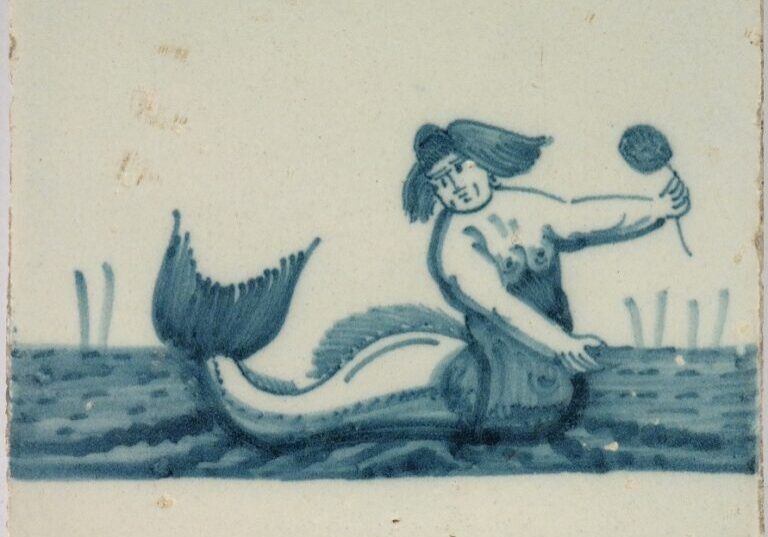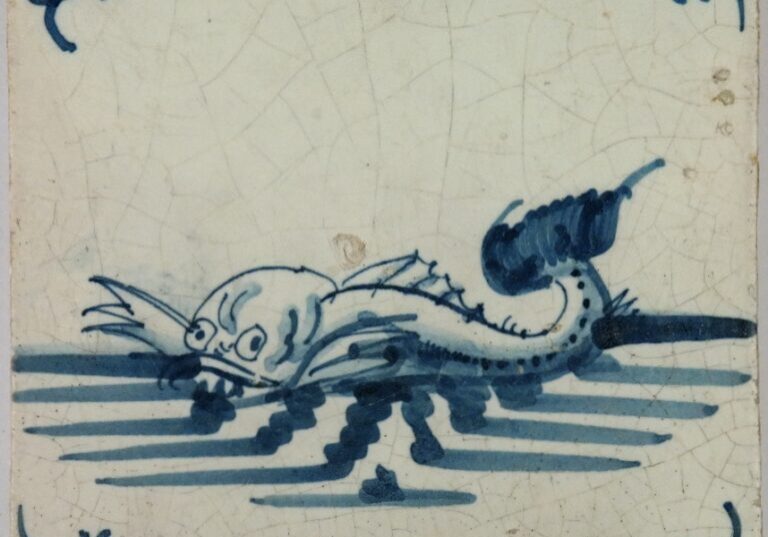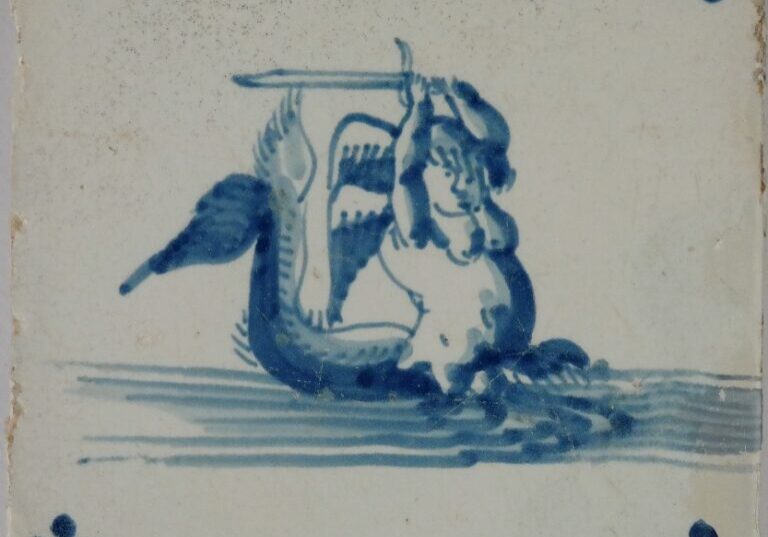Maritime art & objects
This part of the collection mainly comprises objects with a connection to the sea. Figure heads, folk art, travelling trunks, Delft tiles and so on.
Dramatically beautiful figurehead of the goddess Minerva. Minerva is a personification of the divine power of the mind, of the resourcefulness, of the human mind and of wisdom. Later she is gained by the Romans as a warrior and a peace-loving goddess.
With very fine crafmanship carved and decorated. Original paint and surface. The right arm is missing, but this does not detract from the appearance.
Catalog: MA.2-05
Date: 19th century
HWL: 63x40x36 cm (24.8x16x14 in)
Signed: not signed
Origin: unknown
Condition: original condition, no repairs
Six nice litho’s of men of war with their specifications and history, published in 1872 and 1880 by Griffin & Co, Portsmouth:
HMS Hercules HMS Turquoise HMS Neptune
HMS Boadicea HMS Narcissus HMS Minotaur
Catalog: MA.1-09
Date: 1872 and 1880
WL pages: 27×21 cm (10.5×8.2 in)
WL pictures: 19×13 cm (7.5×5.1 in)
Signed: Griffin & Co, Portsmouth
Origin: England
Condition: perfect
Wooden sailing cargo ships in the Netherlands liked to show off their stern. This part of the vessel with deck-house and skipper at the helm naturally caught the attention of the on-shore spectators. The top of the rudder, on top of the wooden helmet, was therefore often decorated with carvings in the shape of a rudder head, a rudder lion or a rudder click.
This multi-colored, beautifully decorated rudder click shows a cornucopia from which comes a green painted oak branch with leaves and acorns, the corners decorated with a cut rope and a brass knob.
In Greek mythology, Zeus was raised by Amaltheia, often depicted as a goat. When one of her horns was broken off, Zeus filled it abundantly with riches and then handed it to the goddess Fortuna.
Catalog: MA.1-24
Date: 1880-1900
HWL: 16x11x130 cm (6.2×4.2×51 in)
Signed: not signed
Origin: Friesland, Netherlands
Condition: perfect for its age
Attractive waxed, wooden travelingtrunk with carrying rings on the sides.
The story tells, the sailor was allowed to bring in the svepask with clothes and personal items, but not more then that.
Scandinavian origin but also in use on Dutch and German vessels.
Catalog: MA.1-31
Date: ca. 1800
HWD case: 29x52x36 cm (11.3×20.5×14,1 in)
Origin: Scandinavian
Signed: not signed
Condition: for its age, good with signs of use and old repairs, see photo’s
Attractive black painted, wooden travelingtrunk.
The story tells, the sailor was allowed to bring in the svepask with clothes and personal items, but not more then that.
Scandinavian origin but also in use on Dutch and German vessels.
Catalog: MA.1-32
Date: ca. 1800
HWD case: 21x47x30 cm (8.2×18.5×12 in)
Origin: Scandinavian
Signed: not signed
Condition: good for its age, signs of use
Two with fine craftmanship made French Navy flint pistols with octagonal, brass barrel, wooden butts and foldable bayonet. Original quality with traces of silver filigree in the butts. Navy pistols are equipped with brass parts due to the weather conditions at sea.
Weapons like these are not top pieces, but they display like no other utensil the atmosphere of combat at sea. Keeping in hand lets feel very well how the battle at sea could take place. Namely from very close. The shot distance was only a few meters. The opponent, a man like you, can be looked into the eyes. And the weapon can only be fired once.
Catalog: MA.2-02
Date: 1780 – 1810
L: 23,5/33 cm (19.2/13 in)
Signed: not signed
Origin: France
Condition: overall in good condition, one flint missing
Catalog: MA.1-125
Date: 18th century
WL: ca. 13×13 cm
Origin: Netherlands
Condition: VG – overall in good condition, no repairs
Catalog: MA.1-117
Date: 18th century
WL: 12,5×12,5 cm
Origin: Netherlands
Condition: VG – overall in good condition, no repairs
Catalog: MA.1-113
Date: 18th century
WL: 13×13 cm
Origin: Netherlands
Condition: VG – overall in good condition, no repairs
